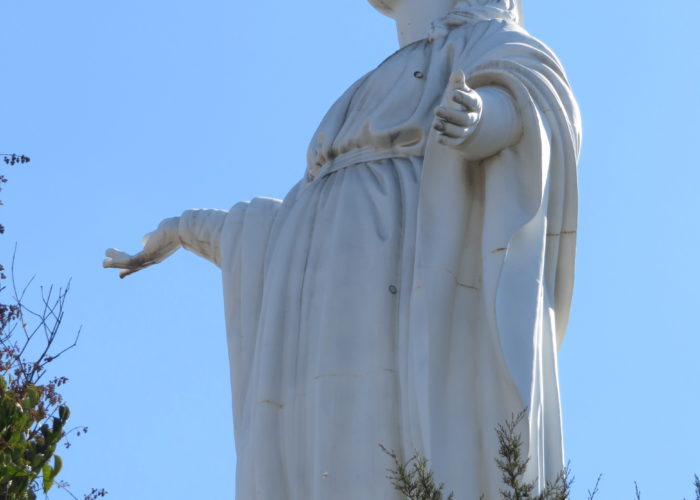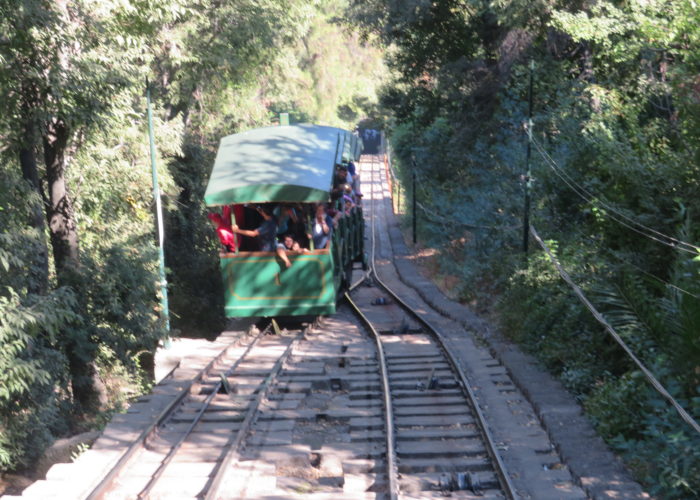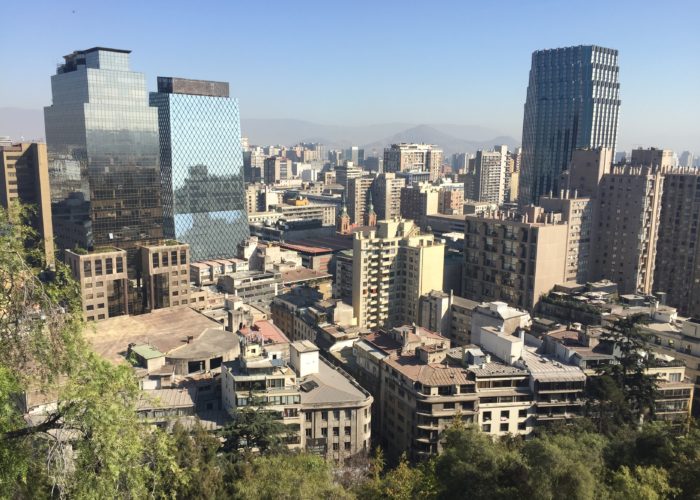Chile’s capital city of nearly seven million dominates the country with nearly 40% of Chile’s population, sits in a big bowl surrounded on all sides by the Andes mountains that protect it from the Pacific Ocean. Its geographic setting is spectacular and as the seasons change, continually evolves. Our visit was in autumn so snow only remained on the highest mountains, but in winter most are snow capped, which makes for very convenient skiing. In autumn many of the trees were in various reds, yellows and other shades, giving another dimension to its aspect.
 The biggest downside of Santiago’s setting is that the mountains trap the pollution from all the motor vehicles and industries that power Chile’s economy and this leaves Santiago with a permanent haze, that only goes away in times of heavy rain. Santiago’s climate with temperatures in the mid to late 20’s and mild rain also adds to its attractiveness, if only the pollution could be tackled more effectively.
The biggest downside of Santiago’s setting is that the mountains trap the pollution from all the motor vehicles and industries that power Chile’s economy and this leaves Santiago with a permanent haze, that only goes away in times of heavy rain. Santiago’s climate with temperatures in the mid to late 20’s and mild rain also adds to its attractiveness, if only the pollution could be tackled more effectively.
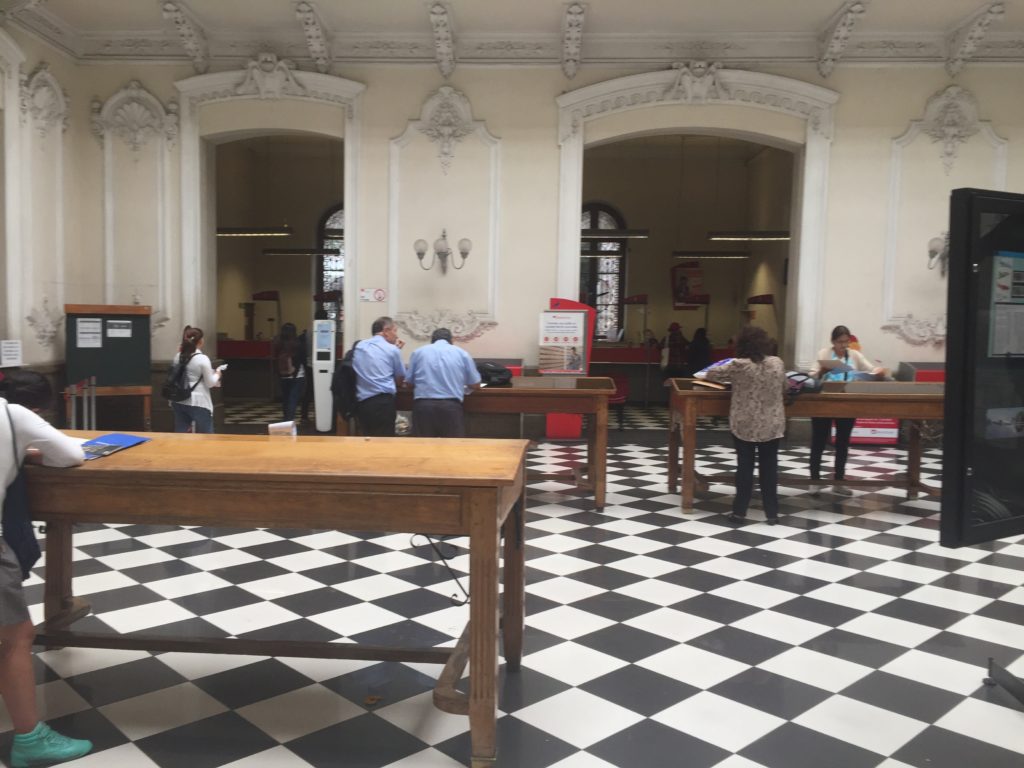
Santiago’s centre is the Plaza de Armas, an elegant square dominated on one side by the Metropolitan Cathedral, with the North side containing the Municipalidad and the Correo Central, an old fashioned post office complete with big tables, galleries and a glass roof being particularly impressive. The other two sides of the square are given over to large buildings with arcades, some of which are in the process of being renovated. At all times of day the square is very busy with both locals and tourists meeting and simply going about their business.
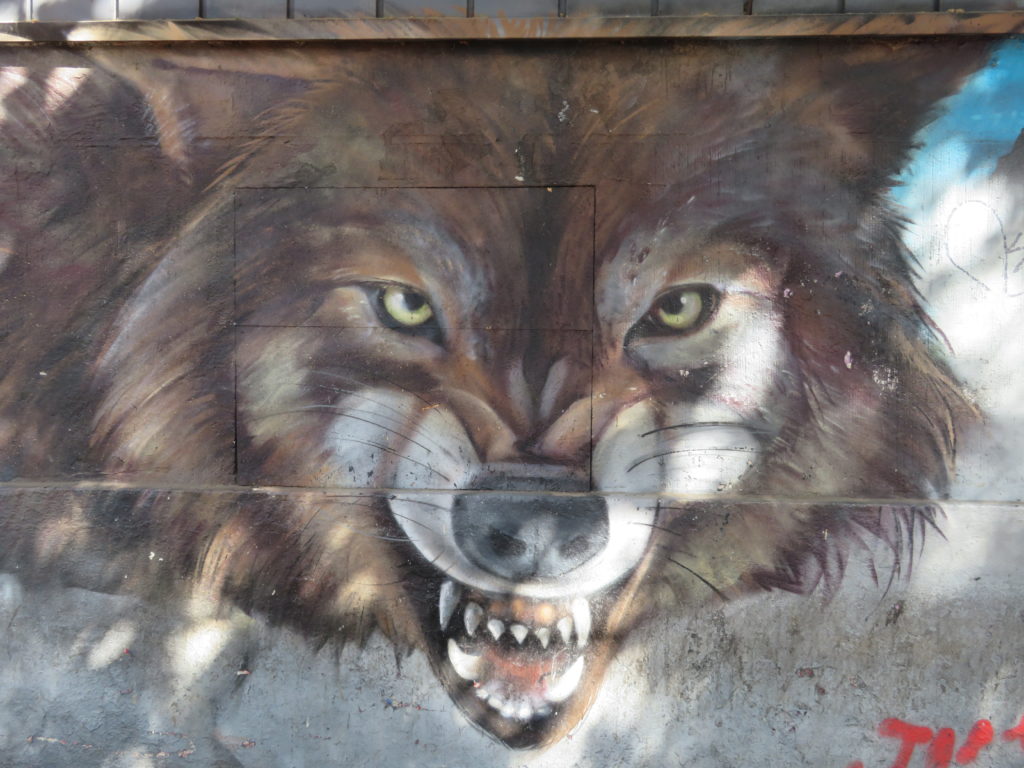 On our first day in Santiago, we picked up a free walking tour in Plaza de Armas. Our guide was an out of work actor and for a couple of hours provided an interesting commentary on many of the sights and buildings as well as his own personal take on the history of Santiago and Chile. In addition we were accompanied throughout by one of the many stray dogs that are in Santiago. Many of these dogs are full size, many old, but almost all are very well natured and simply just enjoy the attention that comes with being in a pack of humans.
On our first day in Santiago, we picked up a free walking tour in Plaza de Armas. Our guide was an out of work actor and for a couple of hours provided an interesting commentary on many of the sights and buildings as well as his own personal take on the history of Santiago and Chile. In addition we were accompanied throughout by one of the many stray dogs that are in Santiago. Many of these dogs are full size, many old, but almost all are very well natured and simply just enjoy the attention that comes with being in a pack of humans.
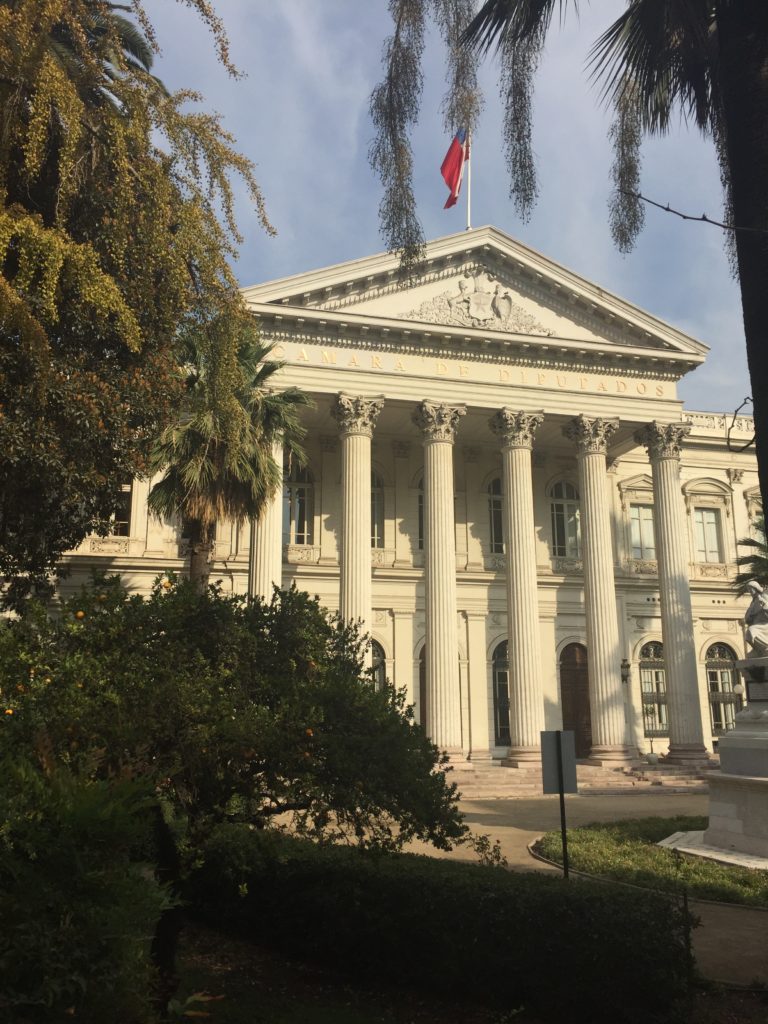 In the block next to Plaza del Armas is the old EX-Congreso Nacional, an attractive building in grounds where the old congress met. Today congress meets in Valparaiso, in an attempt to decentralise activities away from Santiago, however most congressmen and women still live in Santiago and simply drive the one and a half hours to Valparaiso every day, adding to the pollution and the cost of congress without substantially reducing the dominance of Santiago.
In the block next to Plaza del Armas is the old EX-Congreso Nacional, an attractive building in grounds where the old congress met. Today congress meets in Valparaiso, in an attempt to decentralise activities away from Santiago, however most congressmen and women still live in Santiago and simply drive the one and a half hours to Valparaiso every day, adding to the pollution and the cost of congress without substantially reducing the dominance of Santiago.
 The other big significant building is the old mint, the Palacio de la Moneda, which is where the President of Chile resides. The building is surrounded by enormous Chilean flags, indeed all over Chile the national flag is prominently displayed in both public and private buildings. On the 11thSeptember 1973, in one of the darkest hours in Chile’s history, the military bombed the Palacio de la Moneda, and the then President Allende was killed. It is still not known whether he was murdered or committed suicide, but what is clear is that the scars from that coup d’état and the brutal suppression in subsequent days and years have not been fully healed, despite a prosperous economy and Chile’s return to democracy in 1989. Today Allende’s statue stands proud outside the Palacio, but there are no statues to Pinochet the Dictator that overthrew President Allende in Chile.
The other big significant building is the old mint, the Palacio de la Moneda, which is where the President of Chile resides. The building is surrounded by enormous Chilean flags, indeed all over Chile the national flag is prominently displayed in both public and private buildings. On the 11thSeptember 1973, in one of the darkest hours in Chile’s history, the military bombed the Palacio de la Moneda, and the then President Allende was killed. It is still not known whether he was murdered or committed suicide, but what is clear is that the scars from that coup d’état and the brutal suppression in subsequent days and years have not been fully healed, despite a prosperous economy and Chile’s return to democracy in 1989. Today Allende’s statue stands proud outside the Palacio, but there are no statues to Pinochet the Dictator that overthrew President Allende in Chile.
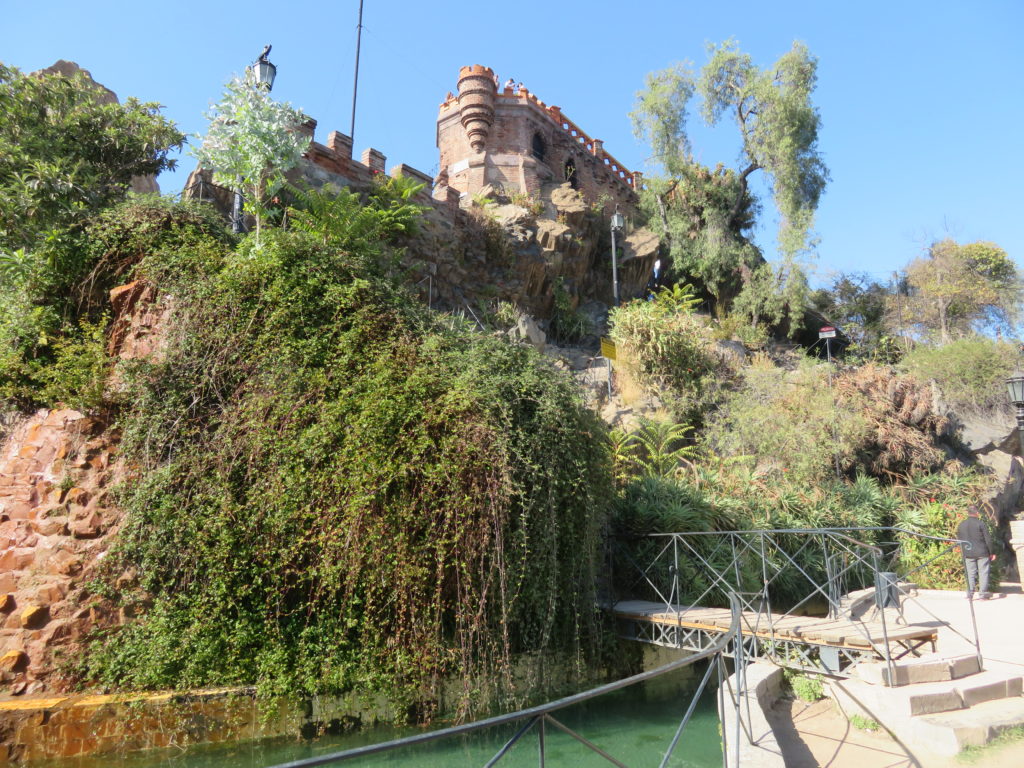
There are two big view points in Santiago, the first is the Cerro Santa Lucia a beautifully landscaped hill right in the centre of the city, with 360 degree views at the top. The second viewpoint is the Cerro San Cristóbal, where you take an old funicular railway up to the top of 860 metres where there is a large statue of the Virgin de la Inmaculadaat the top and associated shrines and churches. The views at the top are spectacular, but also highlight Santiago’s pollution problem too. Behind the Cerro is a large area of parkland, one of the biggest in South America, where locals go for picnics, walks, cycle rides etc.
Near the foot of the Cerro in the Bellavista neighbourhood is La Chascona, one of Pablo Neruda’s houses. Neruda was a Nobel Prize winning poet, and was also a close friend on President Allende. He died within a few weeks of Allende, and despite his properties being vandalised in the aftermath of the coup, they have now been well restored, and show off his eclectic collections and give you an insight into life in the 60s and early 70s.
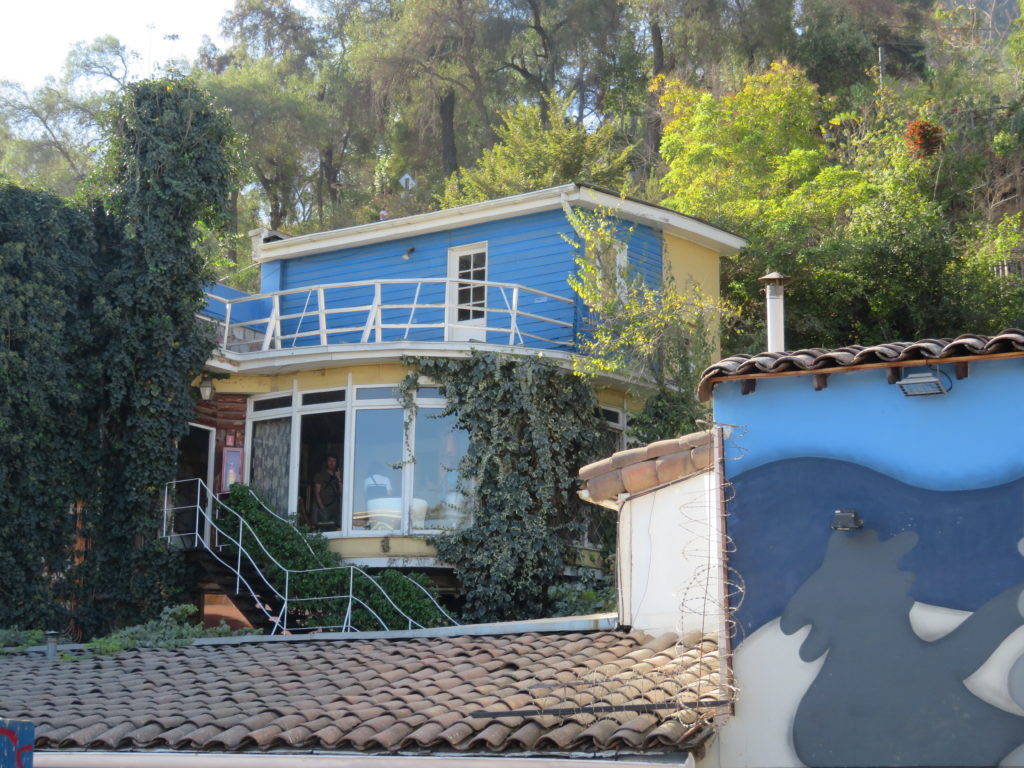
The other big ticket museum in Santiago is the Museo Chileno de Arte Precolomino, a very well presented collection of artefacts from the Atzecs and Mayans in the North, to the Incas and the many other communities in the Andean region from Colombia through to Chile. In the basement there were some original standing statues of the Mapuche and other cultures that we saw in all the towns of Southern Chile.
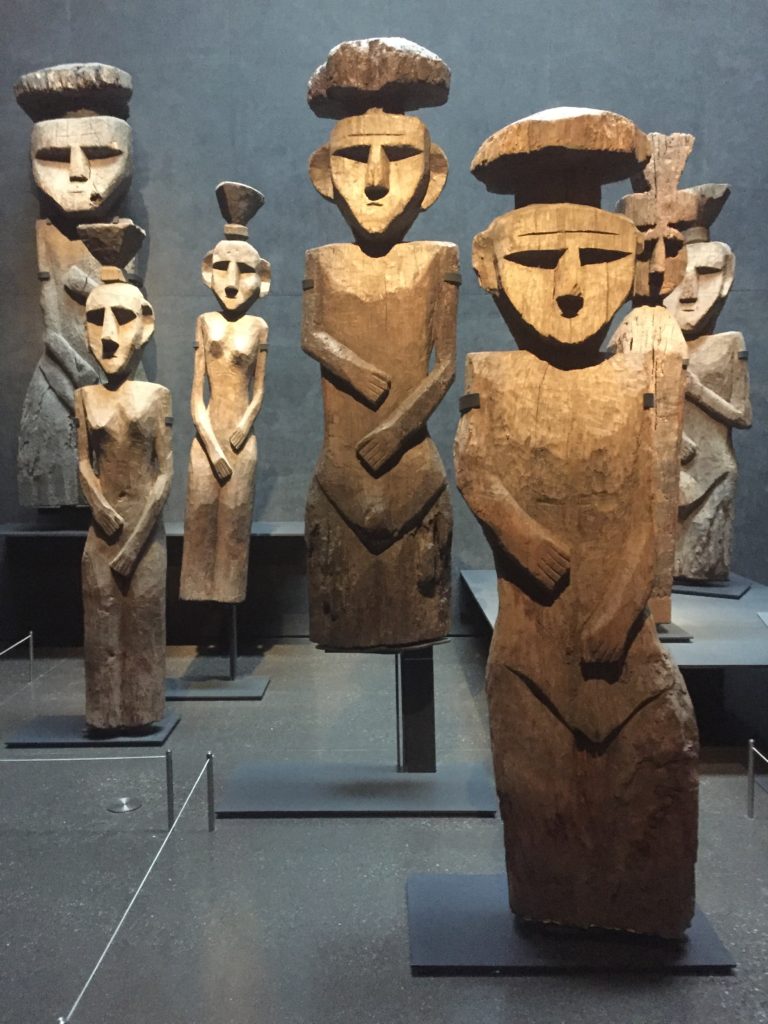
Like many of the other cities we have visited such as Montevideo, Curitiba, Puerto Alegre, etc. Santiago has an old “Victorian style” market. This one centres on fish as opposed to meat and has a number of fish stalls and many restaurants serving seafood, the better value ones being towards the perimeter of the market.


Finally one of the other lasting images of Santiago is the number of young people in the parks, sitting and enjoying time together. Chile appears to be the most traditionally Catholic of the four countries we have visited so far, and that together with what looks like a very expensive housing market, means that the parks are the only place they can escape from both parental and traditional supervision, like young modern people all over the world.

Date: 05/04/2018 to 10/04/2018


